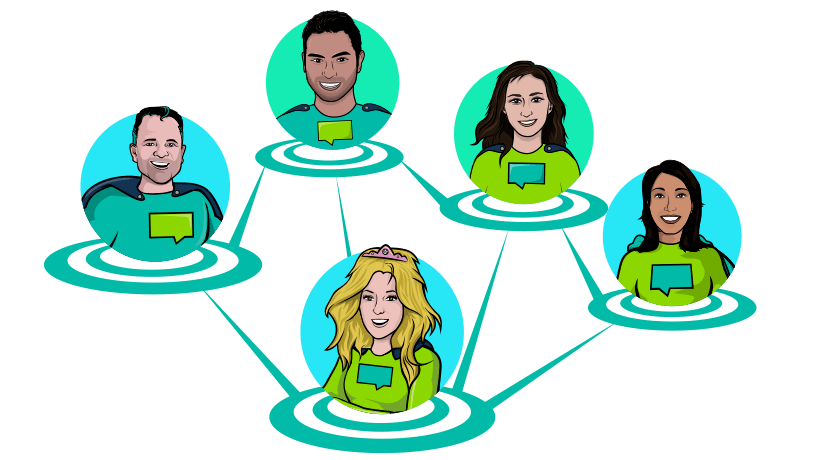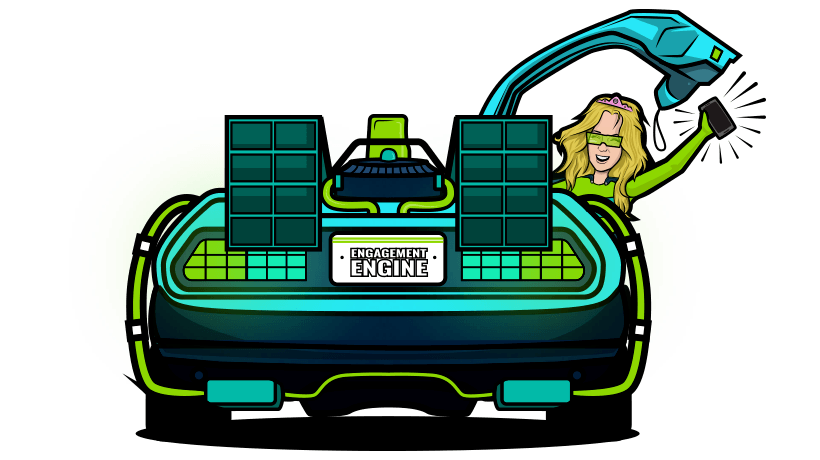Why Embrace Social Learning: What Is It?
Social learning has become one of the most recent buzzwords in the Learning and Development industry. In essence, it’s not a new concept. Many organizations are likely to have been incorporating elements of social learning into their learning and development strategy, probably without even realizing it.
The rise in popularity of social learning has come from the development of sophisticated Learning Management Systems and eLearning techniques. These improvements, plus the demand for more engaging learning, has led to more discussions around how learning can become more social.
In simple terms, social learning is about removing the requirement to learn solo. Instead, it aims to bring employees together to learn. This could involve anything from a simple group task, to individual tasks that require team work or collaboration to complete.
The modern introductions of eLearning techniques, such as gamified learning and microlearning, has only enhanced the ability for organisations to embrace social learning. This article will help you understand how you can embrace social learning and turn its ideas into reality.
How Can I Embrace Social Learning?
Whilst having a basic understanding of social learning is easy, it’s not as simple to know how to put it into action. Many organizations aim to use social learning as it’s thought to effectively re-engage learners, facilitate collaboration, and vary the training options available.
1. Forums
Most sophisticated Learning Management Systems will have forums or chat functions integrations, like the Totara LMS. Using these capabilities to start online discussions with the workforce gives learners the opportunity to share their insights and ideas. For example, you could post a question surrounding an important topic in the workplace, such as “How can we incorporate the new General Data Protection Regulation into the workplace?”. This allows you to jumpstart a discussion about the upcoming legislation, highlighting any ideas or concerns within the workforce. Whilst this is a highly engaging tool, it's important to ensure there are guidelines in place and the forums are monitored in some way.

2. Social Media Platforms
Employees are already accustomed to using social media platforms to keep in touch in their personal lives. However, organizations are increasingly beginning to introduce social media into the workplace. You could get teams of employees to create dedicated social media groups on Facebook or LinkedIn, for example, and assign them with activities. The tasks could include creating learning assets, such as infographics or eBooks, and they could share this with the relevant colleagues who require the same learning. Social media platforms can be helpful to gain feedback from peers but also effectively manage tasks and monitor interaction.
3. Microlearning
Microlearning is essentially short bursts of learning, lasting no longer than 5 minutes. Due to the nature of this learning format, it’s often best used in informal environments, whilst still focusing on a specific outcome. It's a useful technique, as it allows Learning and Development to break learning into smaller chunks to keep up with the fast-paced work environment and this can also be shared with colleagues more easily. A way of incorporating this into a social learning environment could be to get a group to complete different sections of microlearning content, then swap and discuss feedback after completing all sections.
4. Gamification
Rather than designing games that focus on a single learner, there is a trend towards group-based games. Or, if solo learning is key to your organisation, an element of social learning can be achieved by introducing elements such as leaderboards or badges. Both of these elements are supported by learning management systems like Totara. Whilst this adds fun to the learning process, it can also motivate learners into completing learning tasks.

5. Blogging
Encourage your Learning and Development team to come up with a list of topics that are likely to get the workforce interested about learning. Open up discussions such as learning styles or suggestions of content that employees want to see available to them. You might be surprised by the engagement you get, and choosing a blog template with a comments function will allow peers to truly engage in the process.
6. Webinars
Sometimes, learners can be put off by having to sit through an eLearning course by themselves at their desk. A way of making the process more collaborative and social is by scheduling webinars. With an online tool, you’ll be able to host webinars or presentations that cover specific learning topics, but the nature of the tool will allow you to receive feedback and make it a more open discussion with your employees.
Social learning really isn't as intimidating as it sounds. So, if you haven't already, why don't you inject social learning into your organization's learning and development strategy.









